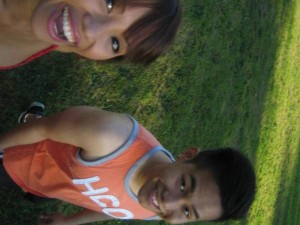
A seizure can be very frightening and dramatic to watch for parents and caregivers. When a child suffers from a seizure attack, the most important advice to the caregiver is to stay calm. This does not only help calm the child but also you and other bystanders. It will help prevent the situation from becoming overblown and turning into a major scene, especially when it occurs in a public space. You should realize that the child is usually unconscious and feels no pain. Usually, seizure attacks last for only a few minutes, and the child does not require special medical attention.
In case of seizure, you should:
- Stay calm. There is no reason to be frightened. Once a seizure has started, you cannot stop it. Let it run its course. Usually, the child will regain consciousness a few minutes after the attack.
- Prevent or minimize possible injury to the child. A child is almost sure to fall when he gets a seizure. If possible catch the child and assist the child down to the floor. Prevent the child from falling on anything sharp such as cornered furniture. Loosen any constricting clothing or accessories, especially at the neck.
- Remove nearby sharp, hard, or hot objects that might injure the child. Place a soft item or cushion beneath the child’s head. Place the child on his side, so that oral secretions can freely flow out of the mouth. Wipe away oral discharge from the mouth and nose to assist in breathing.
- Do not attempt to restrain body movements or jerks. Restraining the child can only cause more violent seizures. Never put anything into the child’s mouth. Perhaps, you might have heard about placing a bar between the lower and upper teeth in case of seizure – DO NOT do this. It can lead to severe damage to the teeth, and you may get bitten while trying to insert the bar.
- Assist the child recover from the attack. Usually, the child needs to rest or sleep after the seizure event. Most children recover and return to normal after they get adequate rest.
- If the child suffers from a seizure lasting more than 10 minutes, or if the child develops series of convulsions that occur closely together, seek medical treatment or bring the child to the nearest emergency department.
Go ahead and enroll for emergency first aid and CPR courses now and start saving lives.
